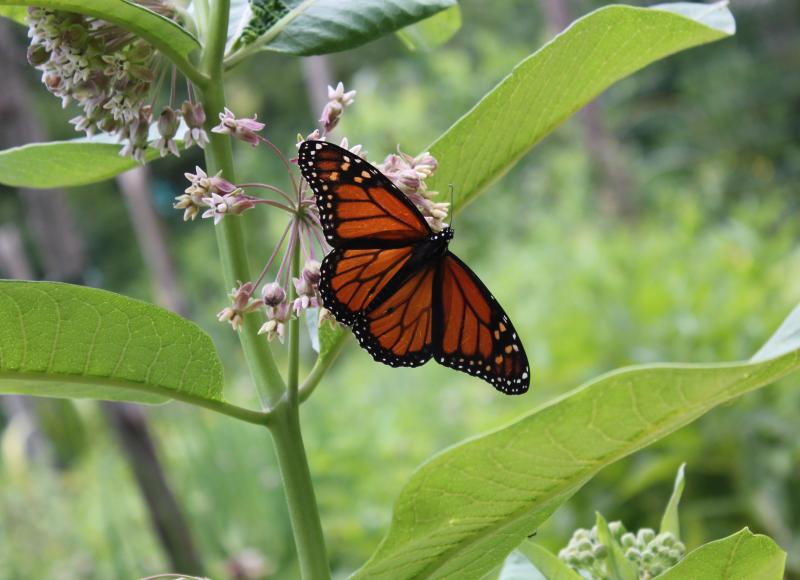If you favor a vegetable garden with perfectly straight, weedless rows or flower beds where each individual plant is set off elegantly in its own space, you probably won’t find anything of interest here.
I’m not writing about gardening with your mother or my mother. I’m writing about gardening with The Mother, who views every empty space as an opportunity and is well known for her love of diversity and excess.
I have been gardening for 16 years here in Maine, but my garden attempts date back 30 years.
My first gardening book “Crockett’s Victory Garden” is still on my shelf; but over the years, I have been lured away from Crockett’s engineer’s precision to nature’s free-for-all.
Along the way, I have learned that some “weeds” and “non-producers” have an essential place in the vegetable garden.
Weeds not only help the soil retain moisture, but they provide another food source for garden pests.
Flowers may not produce food for the table (although some do) but they are candy for the eye. More importantly, they attract pollinators, without which there is no fruit.
The essential plants suggested below offer beauty, attract beneficial insects and some have uses for humans, as well.
They are also hardy and will need little encouragement to thrive and reproduce in any garden. Some will find their way into your garden without being asked.
These are gifts waiting to be given a chance.
Milkweed
Monarch butterflies are the number one reason I find space for this familiar roadside weed in my gardens. Monarch butterflies lay their eggs on milkweed and their developing caterpillar young feed exclusively on this plant. The milkweed’s juice renders both caterpillar and adult distasteful, giving them protection from predators.
Milkweed spreads by both seed and underground roots, but it is quite easy to pull up from unwanted areas.
My goal is to give it an entire bed of its own some day; for now, I let it mingle among vegetables and flowers.
Plantain
This hardy weed can be found in poor soils, disturbed areas and lawns, but reaches its full expression in good soil.
Plantain’s leaves are used to sooth wounds and sores and are particularly useful for insect bites. Stung by a bee or wasp? Grab some plantain, macerate the leaves with fingers or teeth and apply to the stung area.
In short order, the pain, swelling and itching will subside. I used to weed plantain from my garden and then would have to search for it when needed. Now I always allow a few plants to develop.
Echinacea
No garden is complete without this beautiful purple cone flower, known for its healing attributes.
Butterflies, bees and other winged pollinators are drawn to this plant; some people use its roots to make immune-boosting tonics.
Calendula
Also known as pot marigold, these sunny annual flowers are bountiful over a long season.
Sow it once, allow some seed heads to mature, and you will never need to buy seeds or plants again.
Although calendula are exuberant in their growth and reproduction, they are small enough to grow side by side with vegetables. The blossoms can be used to make ointments, washes and salves that sooth the skin.
Golden marguerite
This perennial flower is not only beautiful and prolific, it attracts beneficial insects, like lady bugs, parasitic wasps and lace wings, that prey on the “bad” bugs.
Put away the pesticides and grow more beneficial plants. By making your garden more diverse and hospitable to more bugs, you may find you have fewer bug problems.
Sue Mello can be reached at 207-844-4629 or suemello@boothbayregister.com.


































.png)

.png)
